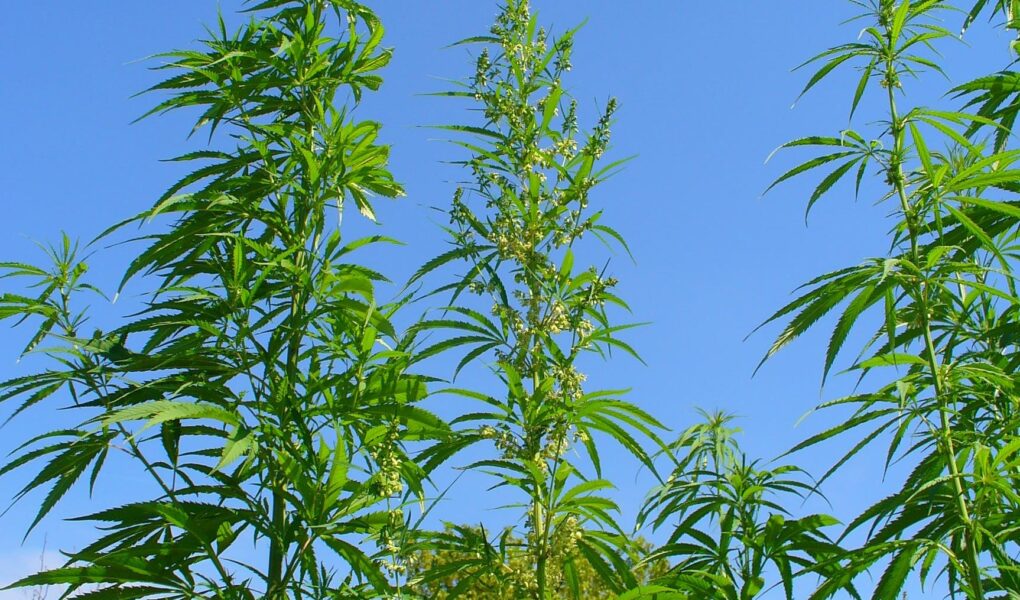In the ever-evolving landscape of drug policy and public perception, few substances have sparked as much debate and division as marijuana. Once relegated to the shadows of societal discourse, the green herb has emerged into the spotlight, captivating legislators, medical professionals, and recreational users alike. As we navigate through a patchwork of state laws and shifting cultural attitudes, a fundamental question looms large: Is marijuana still a Schedule I drug? This classification, sealing its fate alongside substances deemed dangerous and devoid of medical benefit, continues to fuel discussions and reflections on both the legality and the legitimacy of cannabis. Join us as we delve into the intricate web of regulations, scientific research, and societal shifts that surround the status of marijuana, examining whether its classification truly reflects contemporary understanding or if it’s time for an overdue reevaluation.
Table of Contents
- The Current Status of Marijuana Under Federal Law
- Implications of Schedule 1 Classification on Research and Medicine
- State-Level Legalization Trends and Their Impact on Federal Policy
- Future Directions: Advocating for Change in Drug Classification
- Q&A
- In Summary
The Current Status of Marijuana Under Federal Law
The classification of marijuana as a Schedule I substance has been a controversial topic since its inception. Under the Controlled Substances Act, substances classified as Schedule I are defined as having a high potential for abuse, no accepted medical use, and a lack of accepted safety for use under medical supervision. Despite growing support for legalization at state levels, marijuana still remains under this strict classification federally, leading to a myriad of legal and regulatory challenges for both users and businesses. The dichotomy between state and federal laws has created a complex landscape that often leads to confusion and inconsistency.
Efforts to change marijuana’s status have been gaining traction in recent years, propelled by public support and advocacy for reform. Several legislative proposals aim to de-schedule or at least reschedule marijuana, which would allow for its legal medical and recreational use in alignment with state laws. Notably, these points highlight the ongoing debate:
- Public Support: Polls consistently show increasing approval for marijuana legalization.
- State Action: Over 35 states have legalized marijuana in some form, demonstrating a shift in public policy.
- Impacts of Schedule I Classification: Affects research opportunities and access to financial services for cannabis businesses.
Implications of Schedule 1 Classification on Research and Medicine
The classification of marijuana as a Schedule I substance not only creates substantial hurdles for researchers but also stifles innovations in the field of medicine. This classification implies that the drug has no accepted medical use and poses a high potential for abuse, which discourages funding and support for cannabis-related research initiatives. As a result, scientists may be limited to studying strains produced under tightly controlled conditions, lacking diversity and possibly failing to represent the effects of various cannabinoids and terpenes present in naturally occurring cannabis. Consequently, this lack of comprehensive research hampers the development of effective treatments for conditions that marijuana advocates argue could benefit from cannabis, such as chronic pain, PTSD, and epilepsy.
Furthermore, the restriction placed on marijuana research affects medical practitioners as well. Doctors may rely on anecdotal evidence rather than scientific studies to recommend cannabis for therapeutic purposes, creating a gap between patient needs and clinical best practices. Concerns about legality and possible repercussions deter healthcare professionals from exploring cannabis-based treatments, leading to an environment where patients seeking relief may be left with limited options. To illustrate the impacts, consider the following table showcasing the potential medical applications of cannabis that remain largely under-researched due to its Schedule I status:
| Medical Application | Status of Research |
|---|---|
| Chronic Pain Management | Minimal Evidence |
| Post-Traumatic Stress Disorder (PTSD) | Limited Studies |
| Epileptic Seizures | Emerging Research |
| Appetite Stimulation in Cancer Patients | Lack of Comprehensive Data |
State-Level Legalization Trends and Their Impact on Federal Policy
Across the United States, a significant wave of state-level legalization has reshaped the landscape of cannabis regulation. As states like California, Colorado, and New York move to decriminalize or fully legalize marijuana for recreational use, the conversation surrounding its classification as a Schedule I drug intensifies. This evolution in state policy reflects changes in public opinion, with growing support for legalization prompting local governments to reconsider long-standing legal frameworks. The implications are profound, as states that have adopted more lenient laws are increasingly at odds with federal policy, which maintains that marijuana has no legitimate medical use and poses a high potential for abuse.
Furthermore, the divergence between state and federal regulations raises critical questions about enforcement, taxation, and public health. States that embrace legalization often report benefits such as improved tax revenues and reduced law enforcement costs, which can influence federal lawmakers to rethink current scheduling. As these trends continue, it is essential to monitor their influence on national policy discussions. Below is a summary of some key state-level legalization movements and their observed impacts:
| State | Status | Impact |
|---|---|---|
| California | Legalized (2016) | Increased tax revenues; job creation |
| Colorado | Legalized (2012) | Lowered law enforcement costs; improved public health programs |
| New York | Legalized (2021) | Social equity initiatives; thriving cannabis market |
Future Directions: Advocating for Change in Drug Classification
As the conversation around drug policy evolves, so too must our approach to the classification of substances like marijuana. Advocates for change are pushing for a reevaluation of marijuana’s Schedule I status, highlighting the need for a more nuanced understanding of both its risks and therapeutic benefits. Evidence continues to mount, with numerous studies indicating that marijuana can be an effective treatment for various conditions, such as chronic pain, epilepsy, and multiple sclerosis. This calls for a critical examination of existing policies that disproportionately impact users and limit access to potentially life-saving treatments.
Key stakeholders are actively engaging in dialogues to reshape drug policies. Among them are:
- Healthcare Professionals: Urging for classifications that reflect scientific evidence rather than outdated perceptions.
- Researchers: Conducting studies that highlight the benefits and risks of marijuana, pushing for regulatory changes based on empirical data.
- Political Activists: Mobilizing communities to advocate for legislative reform to decriminalize and reclassify marijuana.
As these conversations gain traction, it is essential to consider the implications of maintaining the current classification. An informative comparison may shed light on the discrepancies in the scheduling of various substances:
| Substance | Schedule | Medical Use |
|---|---|---|
| Marijuana | Schedule I | Recognized therapeutic potential but restricted access. |
| Cocaine | Schedule II | Limited medical use for anesthesia. |
| Oxycodone | Schedule II | Widely used for pain management. |
By fostering a dialogue that prioritizes health and well-being over stigma, we can pave the way for a more equitable and effective approach to drug classification.
Q&A
Q&A: Is Marijuana Still a Schedule I Drug?
Q: What is a Schedule I drug?
A: A Schedule I drug, as categorized by the United States Drug Enforcement Administration (DEA), is a substance that is deemed to have a high potential for abuse, lacks accepted medical use in treatment, and has no accepted safety for use under medical supervision. This category includes drugs like heroin, LSD, and, yes, marijuana.
Q: Is marijuana currently classified as a Schedule I drug?
A: As of October 2023, marijuana remains classified as a Schedule I drug at the federal level. This means that, federally, it is still considered to have no accepted medical use and a high potential for abuse. However, it’s essential to note that several states have legalized marijuana for recreational and medicinal use, creating a complex legal landscape.
Q: Why is marijuana still classified this way?
A: The classification is rooted in historical, cultural, and political factors. Despite evolving public opinion and increasing evidence of its medical benefits, the federal classification has not changed. Efforts to reclassify marijuana or remove it from Schedule I have been challenging, often faced with legislative hurdles and opposition from various stakeholders.
Q: How does this classification affect medical marijuana?
A: The Schedule I status poses significant limitations. It restricts researchers from studying marijuana’s full potential, hinders access to medical marijuana for patients in states that do not have legal frameworks, and complicates banking for cannabis businesses. This restrictive classification stands in stark contrast to the expanding acceptance and legalization at the state level.
Q: Are there any movements to change marijuana’s status?
A: Yes, there are ongoing movements advocating for the reclassification of marijuana. Legislative proposals have been introduced in Congress aiming to either decriminalize marijuana or move it to a lower schedule. Many activists and organizations are lobbying for these changes, emphasizing the need for a shift towards more evidence-based policies.
Q: What should individuals know if they live in a state where marijuana is legal?
A: If you reside in a state where marijuana is legal for recreational or medical use, it’s crucial to understand that while state laws allow its use, federal law still considers it illegal. This discrepancy can affect everything from employment to travel. Always be aware of your local laws and how they interact with federal regulations.
Q: What implications does this classification have for the future of marijuana?
A: The continued classification of marijuana as a Schedule I drug serves as a barrier to comprehensive legalization efforts, research advancements, and societal acceptance. However, shifting public attitudes and state-level legalization efforts may influence federal policies in the future. Advocates remain hopeful that ongoing discussions will eventually lead to a reevaluation of marijuana’s classification.
Q: where do we stand on marijuana’s status?
A: marijuana is still classified as a Schedule I drug at the federal level, meaning it faces strict regulations and limitations. However, the landscape is rapidly changing at the state level, reflecting a significant shift in public perception and acceptance. The future holds potential for change, but as of now, marijuana remains in the same regulatory boat it has been in for decades.
In Summary
As we draw the curtain on our exploration of marijuana’s status as a Schedule I drug, it’s clear that this topic is steeped in complexity and nuance. While the legal landscape continues to evolve, the debate surrounding cannabis invokes a spectrum of opinions, grounded in scientific research, societal norms, and personal experiences.
The future of marijuana, with its potential for reclassification and the growing acceptance in various states and nations, suggests that change is indeed on the horizon. However, until federal guidelines catch up to public perception and state legislation, we remain in a state of limbo.
In navigating this ever-shifting terrain, it’s crucial to remain informed and engaged, as the implications of these decisions resonate far beyond legal classifications — impacting health, economy, and social justice. As society continues to weigh the benefits and risks of cannabis, one thing is certain: the conversation is far from over. Keep your finger on the pulse as we collectively chart the path ahead, one question at a time.



